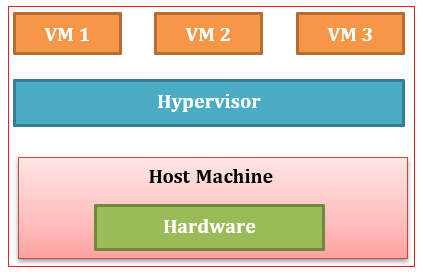| ☰ See All Chapters |
Amazon EC2 virtual machine
Virtual machine is not a real machine but you can perform everything from virtual machine as in real physical machine. A virtual machine (VM) is a part of a physical machine that’s isolated by software from other VMs on the same physical machine; it consists of CPUs, memory, networking interfaces, storage and all resources as in real machine. The physical machine is called the host machine, and the VMs running on it are called guests. A hypervisor is responsible for isolating the guests from each other and for scheduling requests to the hardware, by providing a virtual hardware platform to the guest system.

Amazon Machine Images
Assume you have created a virtual machine. Installed operating system to VM. Installed complex stacks of software and servers to this VM. Next time if you want same set of VM with same such complex software and servers installed in the VM you have to spend again time to set up the VM. Instead, you save the VM you have created in the first time as a template with all OS setup, configurations and installations. In future if you want to create such VM you can just pull out the setup from the template you saved. Such templates are called as Amazon Machine Image (AMI).
Amazon Machine Image (AMI) is a package of configurations of the virtual server, pre-installed softwares, root devices, and much more for creating EC2 instances. If you make a mistake or somehow mess up some important configuration files, you can easily pull the plug on an Image and have a replacement up and running, usually in less than a minute.
AWS uses Xen, an open-source hypervisor. The current generations of VMs on AWS use hardware-assisted virtualization. The technology is called Hardware Virtual Machine (HVM). A virtual machine run by an AMI based on HVM uses a fully virtualized set of hardware, and can take advantage of extensions that provide fast access to the underlying hardware.
All Chapters

